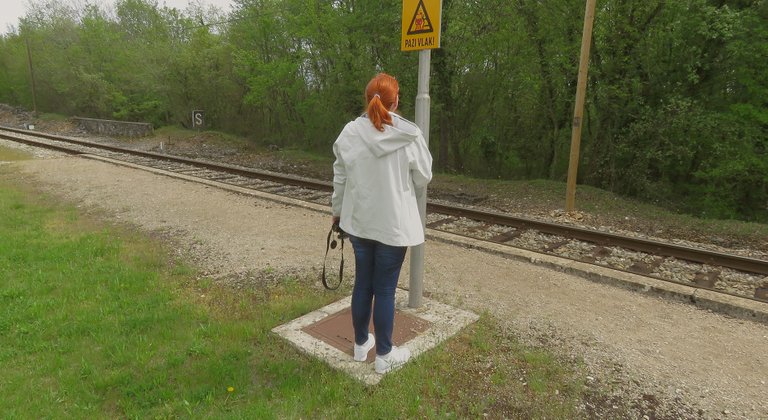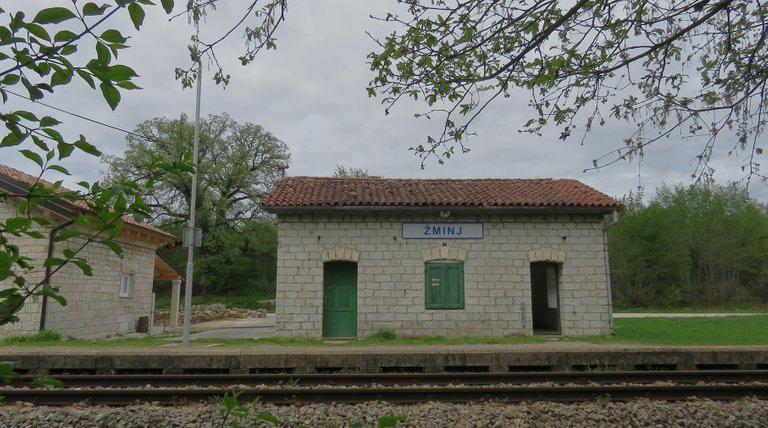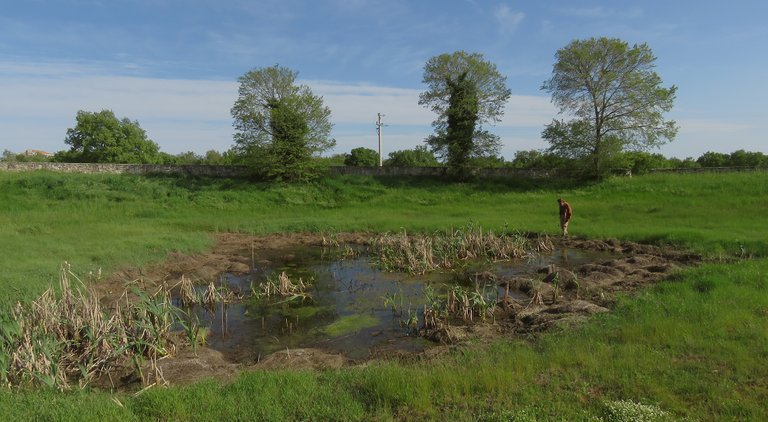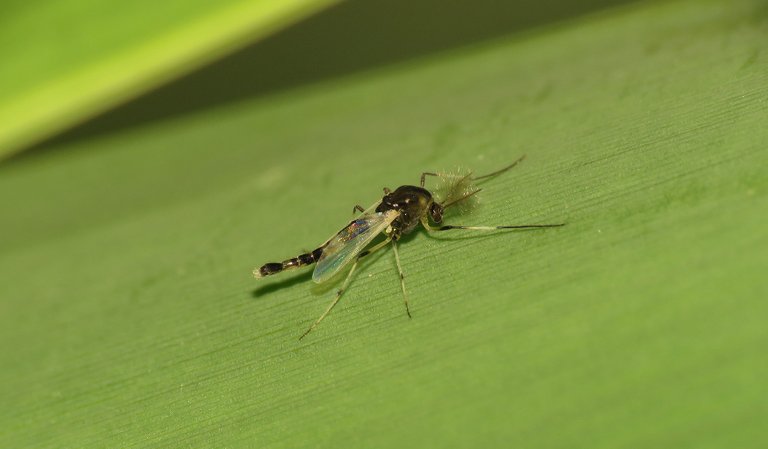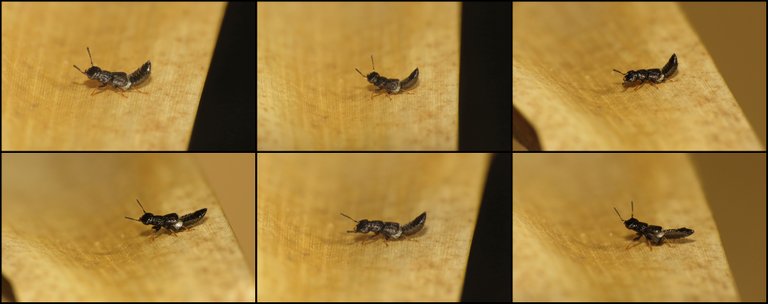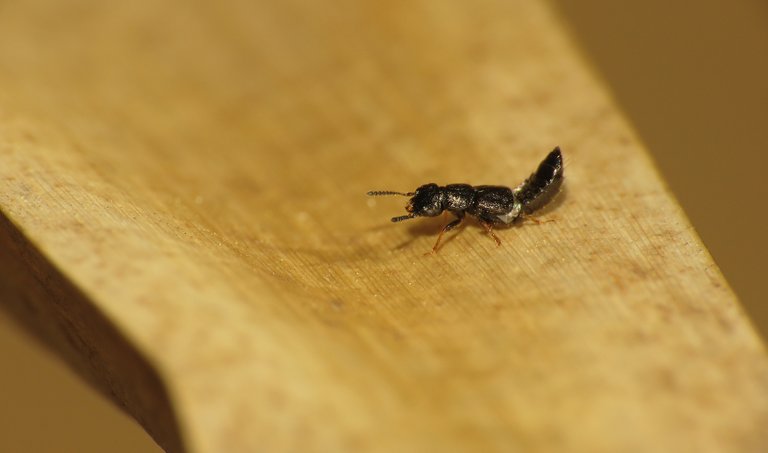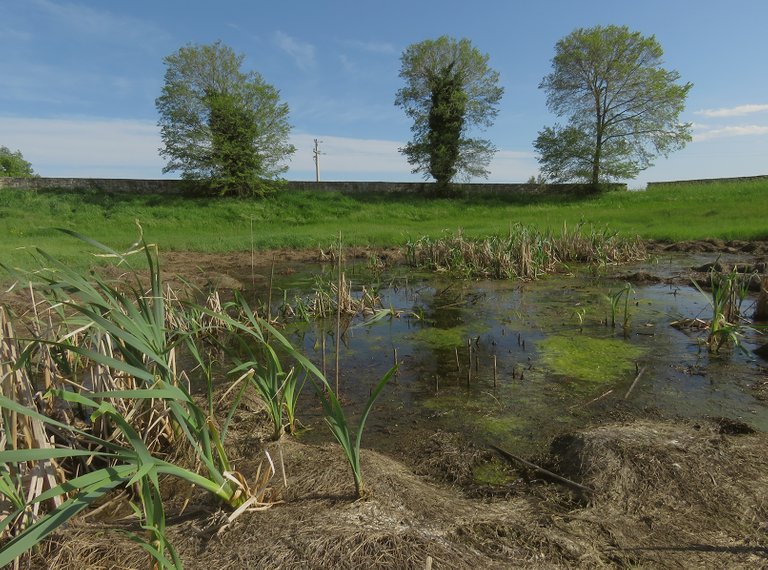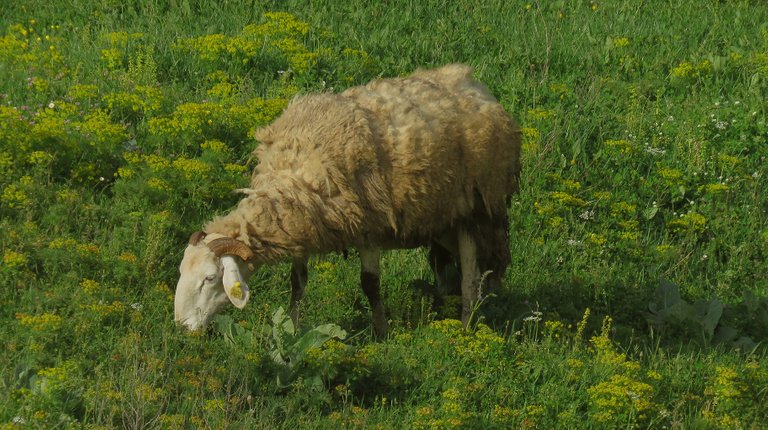I spent most of that day on the road. Three friends were also rambling with me.
The sky was slightly overcast when this little trip started, but the temperature was pretty high and it was slowly getting bright and sunny.
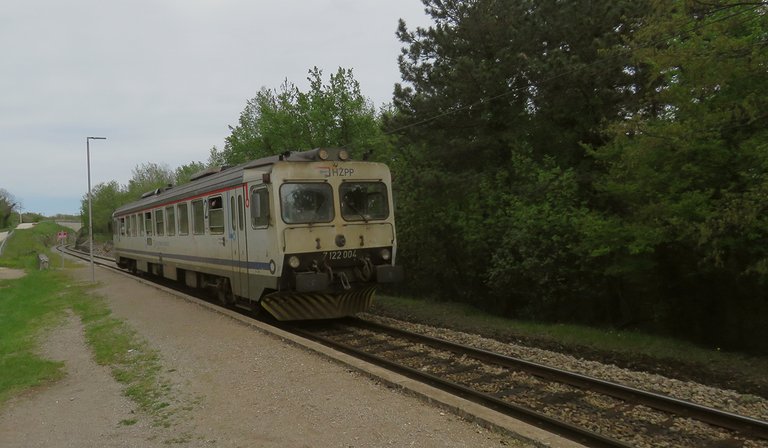
The exact date was the 1st of May 2021 ...
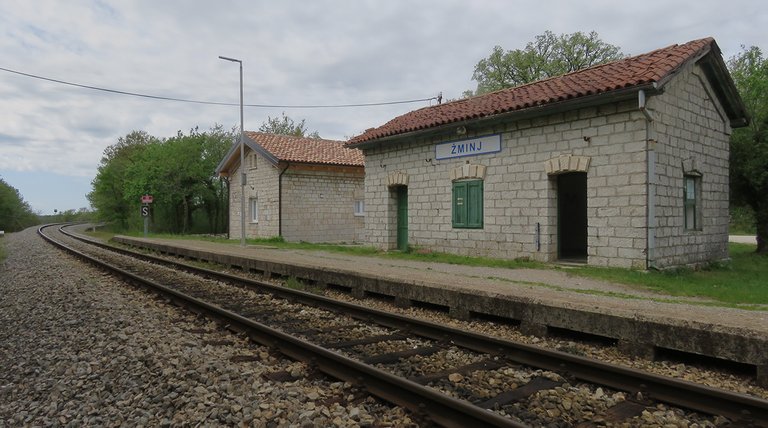
... and our first stop was by the small train station a couple of kilometers from the town called Zminj ...
... about fifty kilometers from Medulin, our hometown. Here you can see a friend watching the sign with WATCH OUT! TRAIN! written on it.
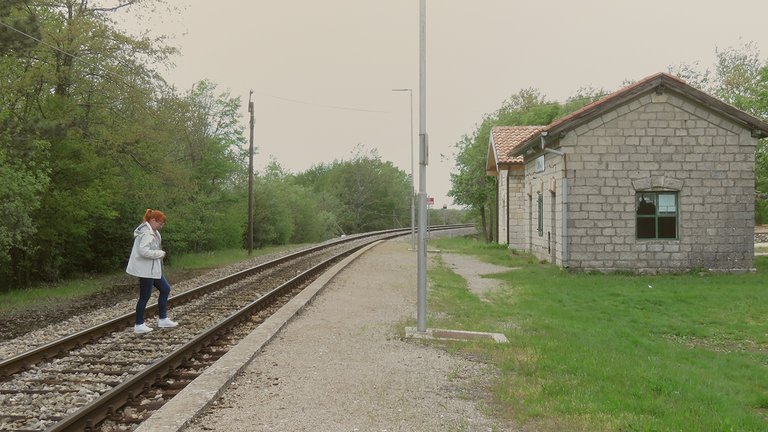
A bit later ...
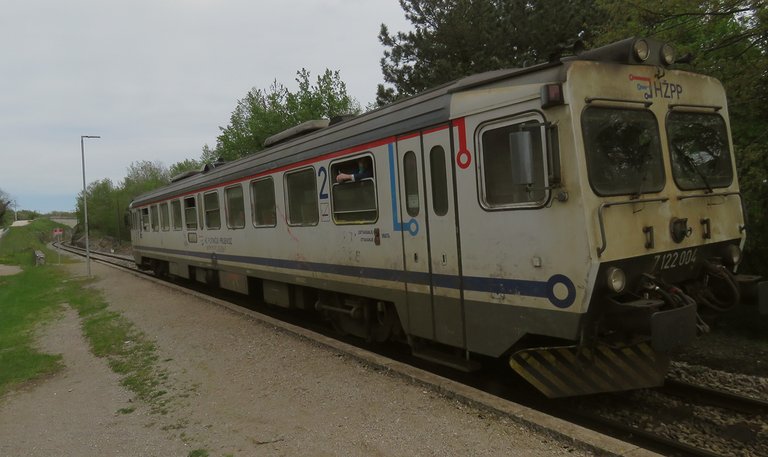
... the small, I mean - short train passed by ...
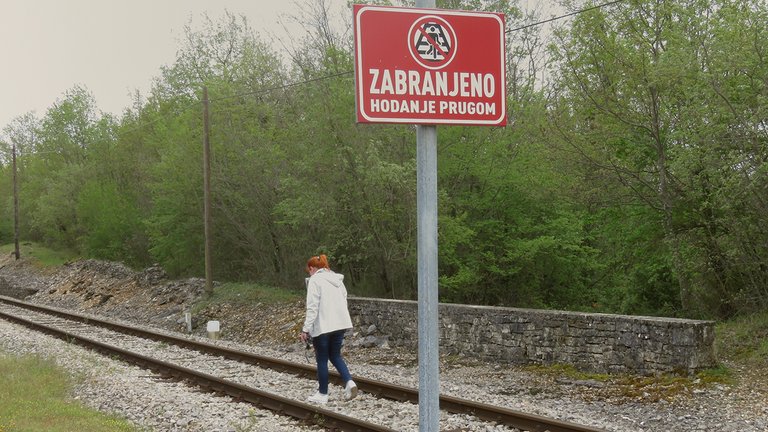
... and when the train disappeared from the view, I caught the same friend on the rails. She was following the train, despite the nearby sign that states WALKING ON THE RAILWAY FORBIDDEN. After taking this funny but slightly controversial shot ...
... it was time to take a look at the interior of the little station.

There was a nice mosaic on the floor ...

... and this highly emotional writing on the wall. Someone has written a simple I LOVE YOU. The door is non-existent, so this place is probably used as a party den at night.
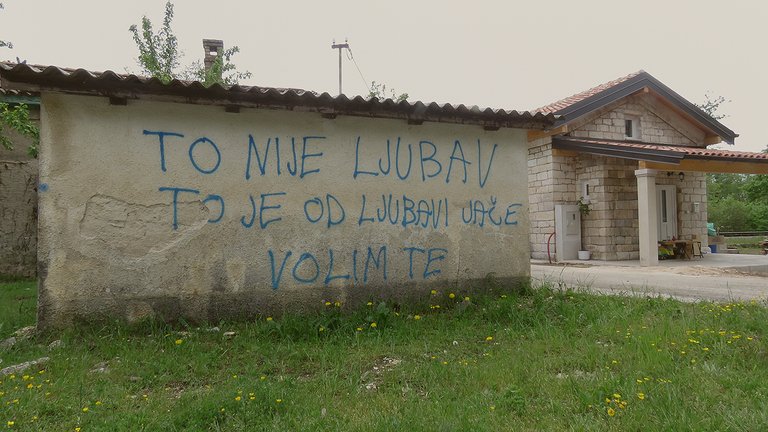
There was another, more elaborate writing on the posterior facade of the small building. The author is probably the same. This time the poetry goes: THIS ISN'T LOVE. IT IS STRONGER THAN LOVE. I LOVE YOU. It sounds like a teenage emotional outburst triggered by the flowering season and all those invisible springtime particles in the air.
Before leaving this place, we took a short walk in the woods across the rails. These buds of the Helianthemum nummularium plants were photographed there, on the edge of the forest.
This is the last look at the station. Soon we crossed the rails, entered the car, and drove away.
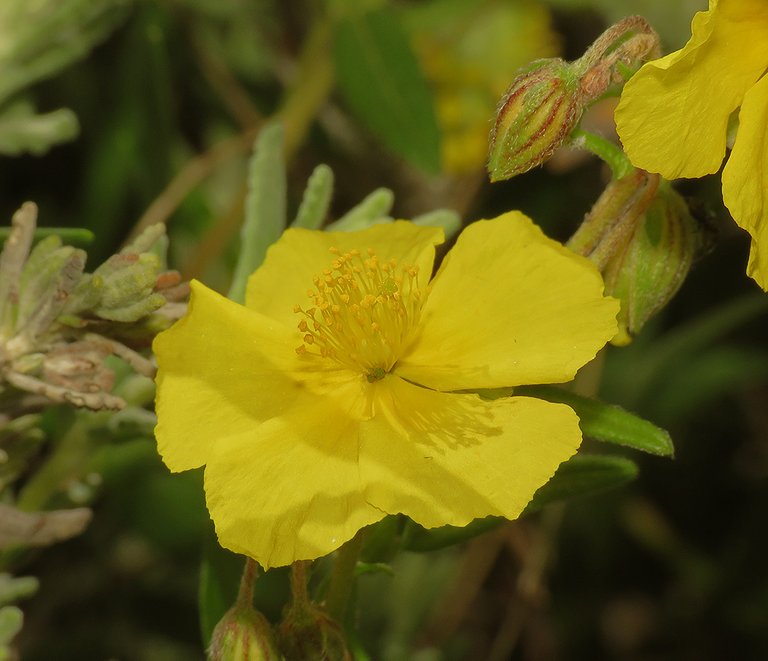
Half an hour later ...
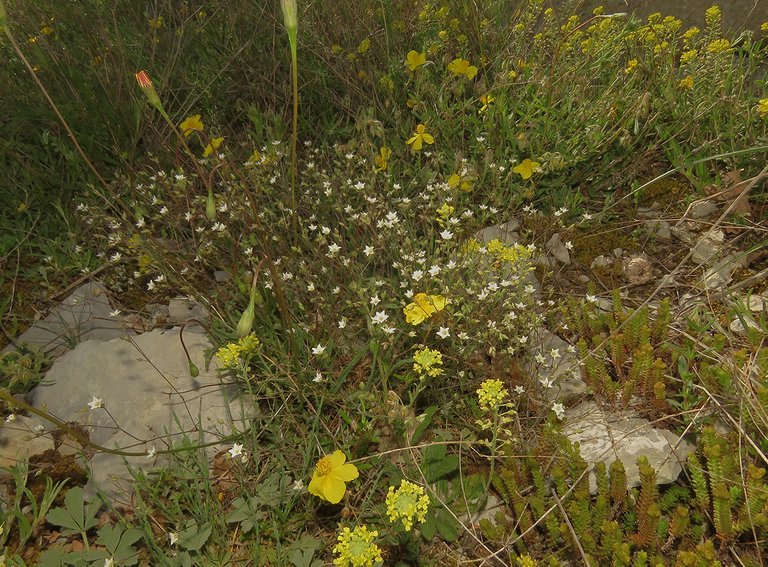
... we stopped in the stony area covered with many beautiful flowers.
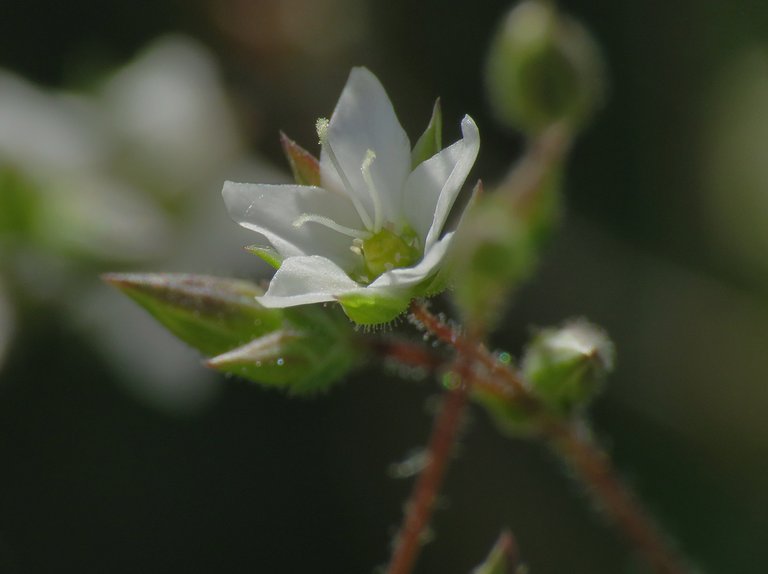
These small, white ones ...
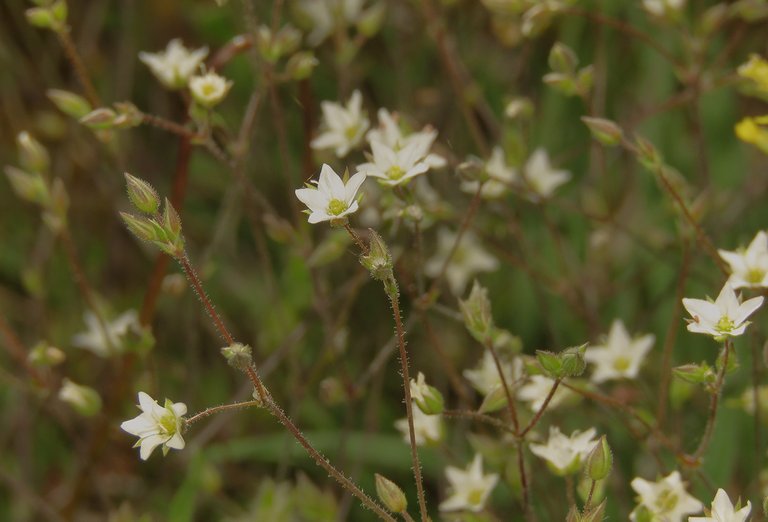
... belong to the Minuartia verna ...
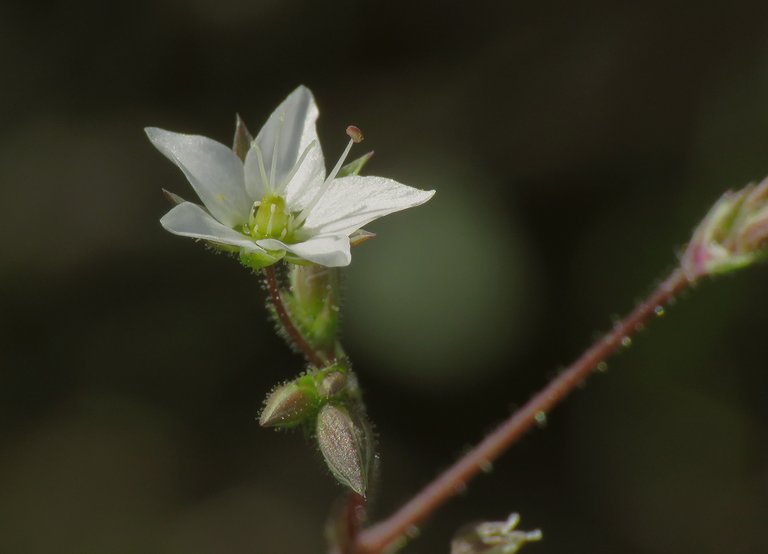
... a plant that grows on open stony terrains, by the roads, and near the walls in rural areas.
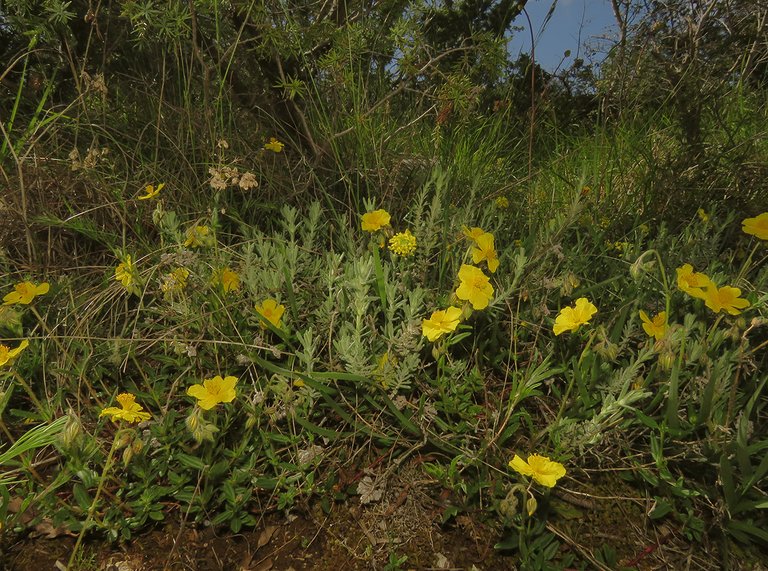
Here I also encountered the Helianthemum nummularium again. While the plants near the rails were ready to bloom but the flowers were still closed ...

... in this sunnier place, the situation was more colorful.
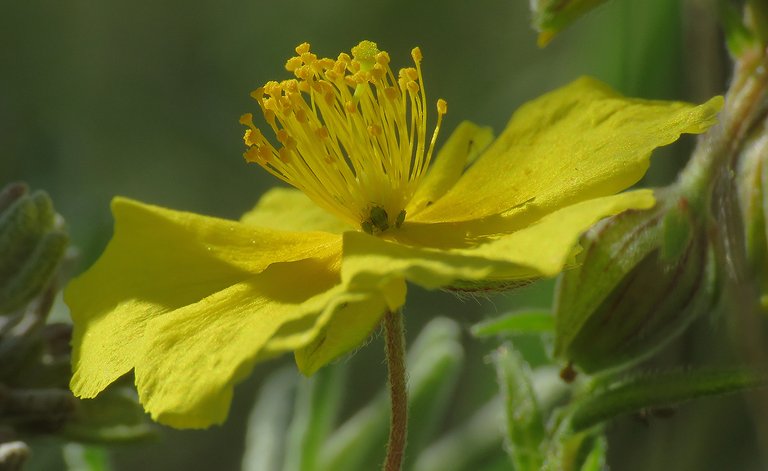
On one of these lovely yellow flowers ...
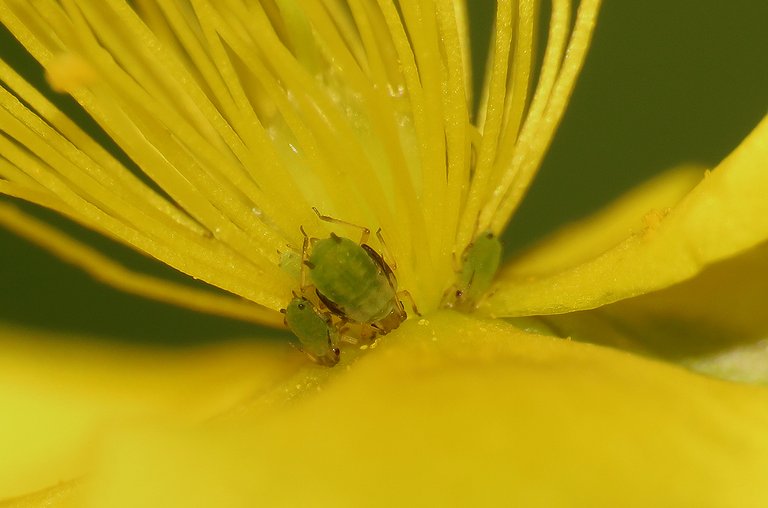
... I photographed a trio of minuscule green aphids.

After taking another portrait of the Helianthemum nummularium flower ...
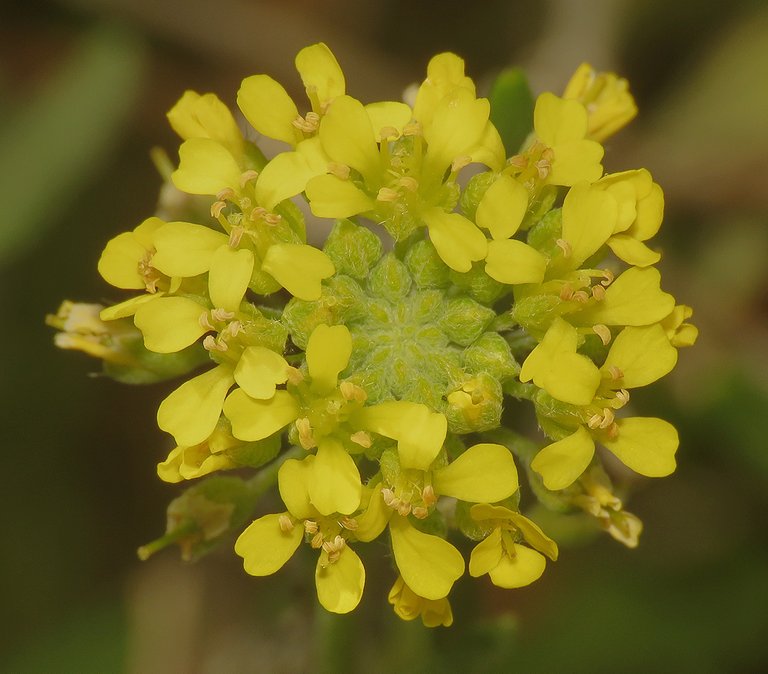
... and photographing this cluster of small Erucastrum incanum flowers, we continued our journey.
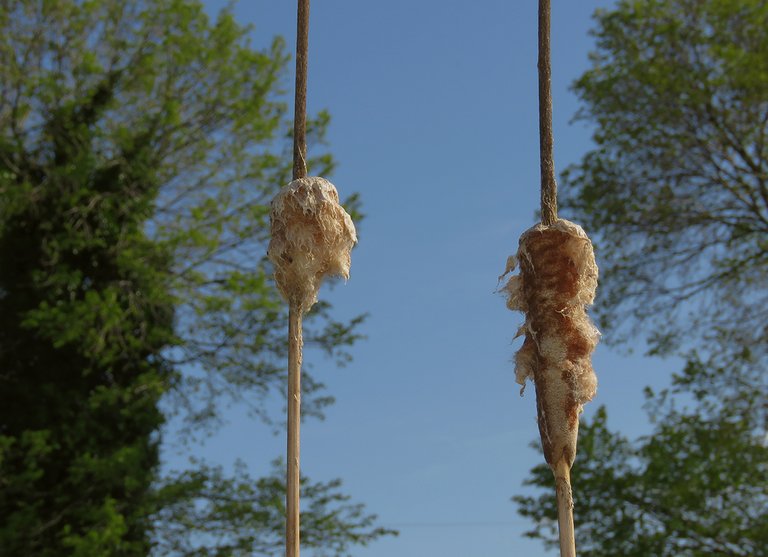
Fifteen or twenty kilometers further ...
... we came across a small pond. At this point, the sky was clear and blue. The cattails were growing in the shallow water ...
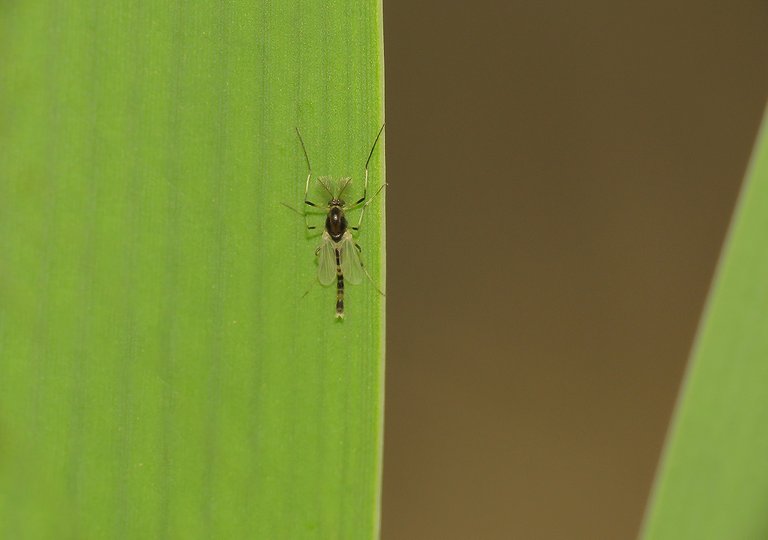
... and I found some interesting insects ...
... on the long, fibrous leaves of those plants. This is some kind of midge. With many similar species around, I can't tell you which one exactly is this. But I can tell you that is a male. Only males have these feathery antennae capable of detecting the female pheromones at great distances. Midges are small, mosquito-like flies from more Families in the suborder Nematocera.
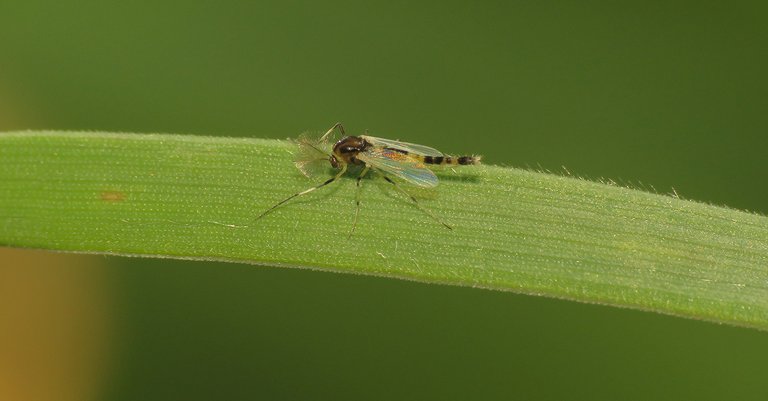
The midge in this photograph landed on the blade of grass near the pond. These insects are very small, but the species in the following photograph ...
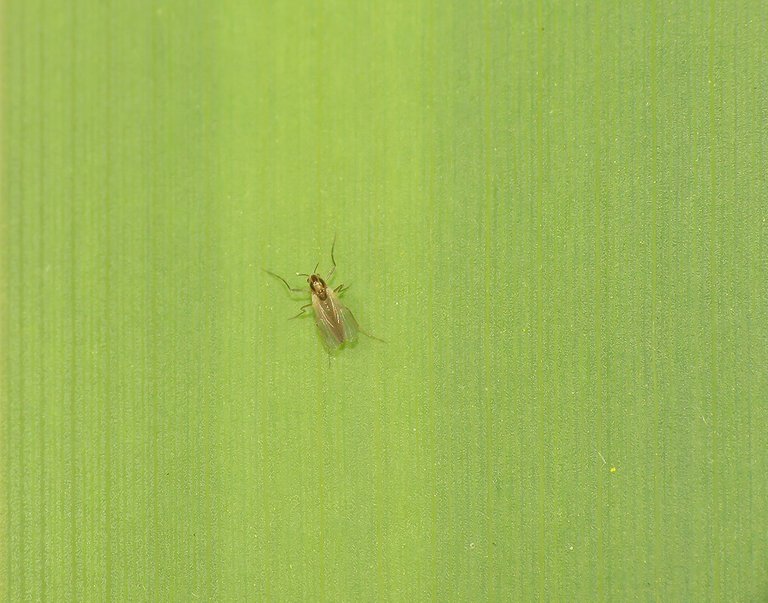
... is much smaller.
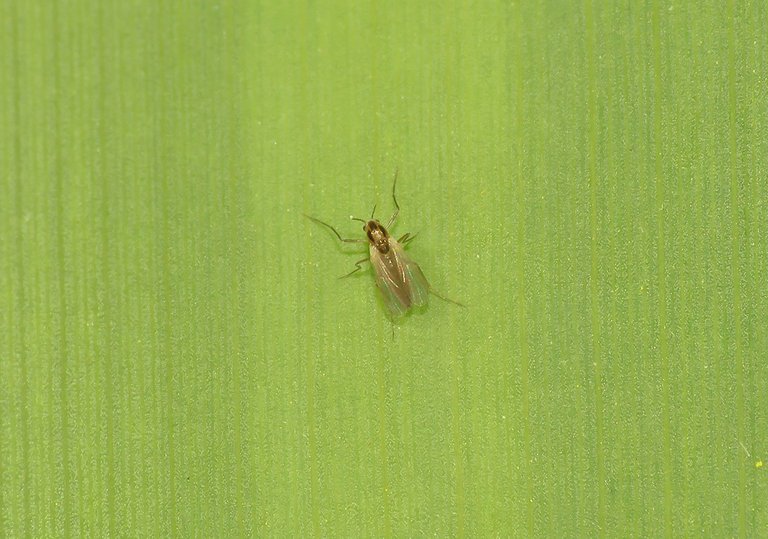
This is also a minuscule fly. But in this case, I can't tell you anything else. I never noticed this species before.
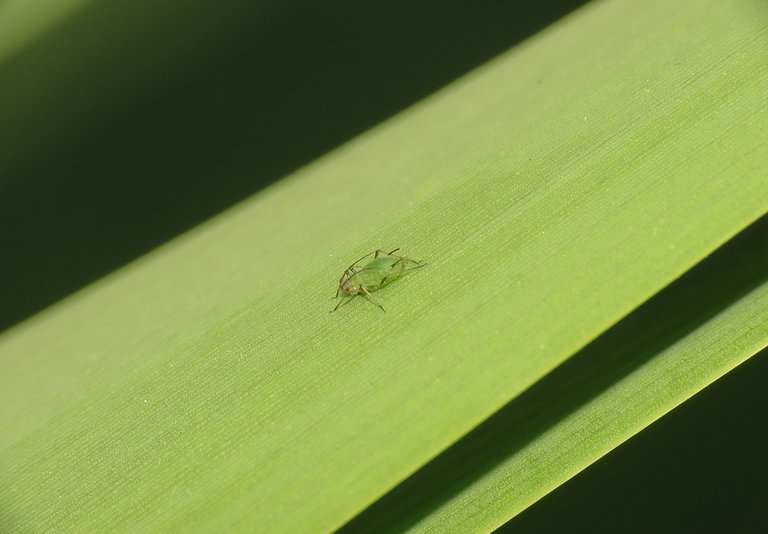
On another cattail leaf ...
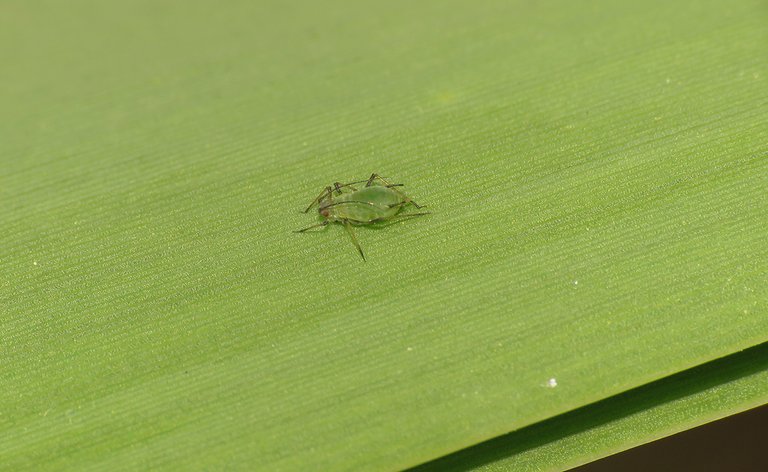
... I found a well-camouflaged aphid.
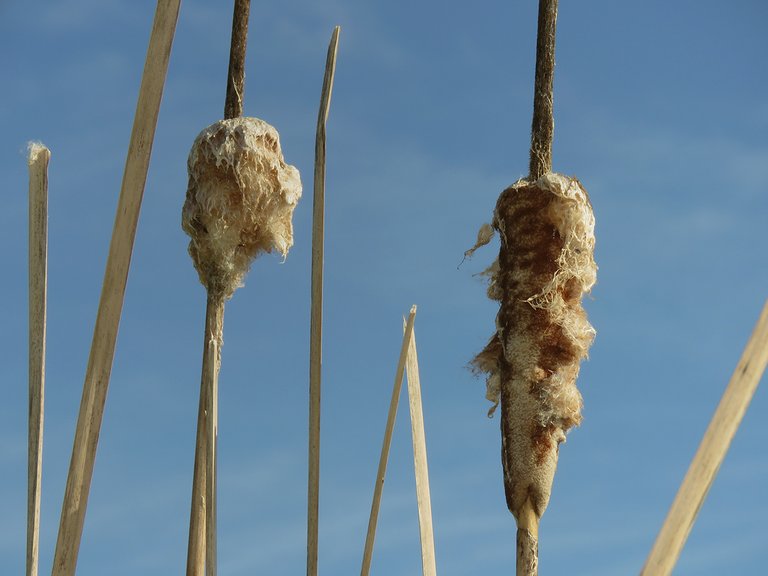
Here you can see the seeds of the Typha latifolia cattail.
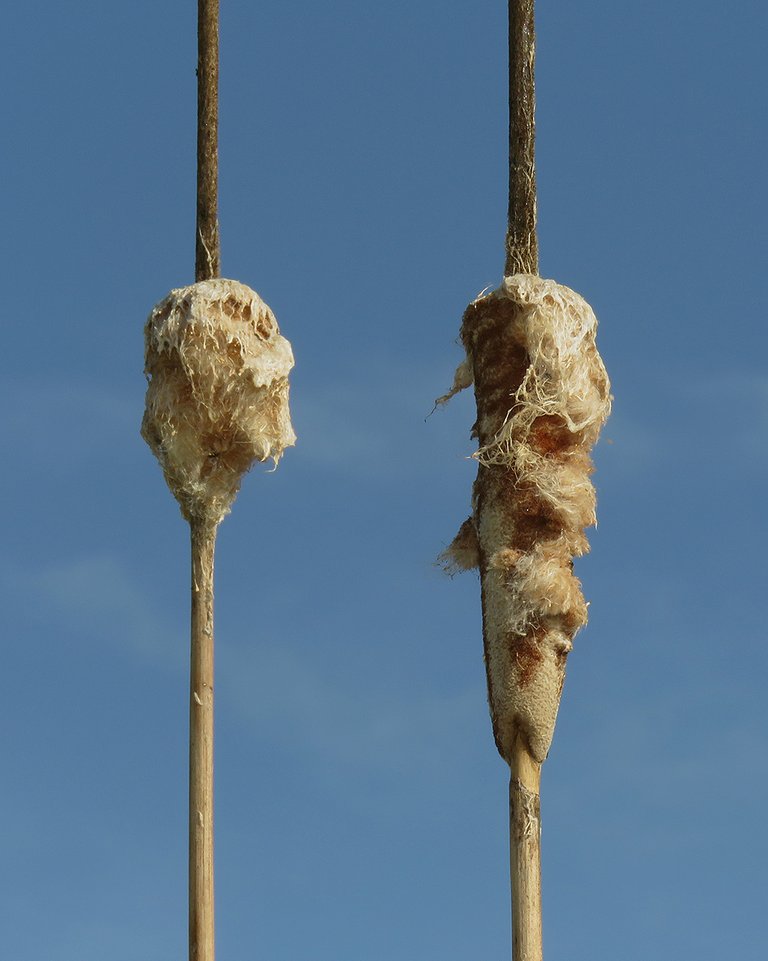
These formations sometimes look like cotton candy on a stick. In this case - like partially eaten cotton candy on a stick.
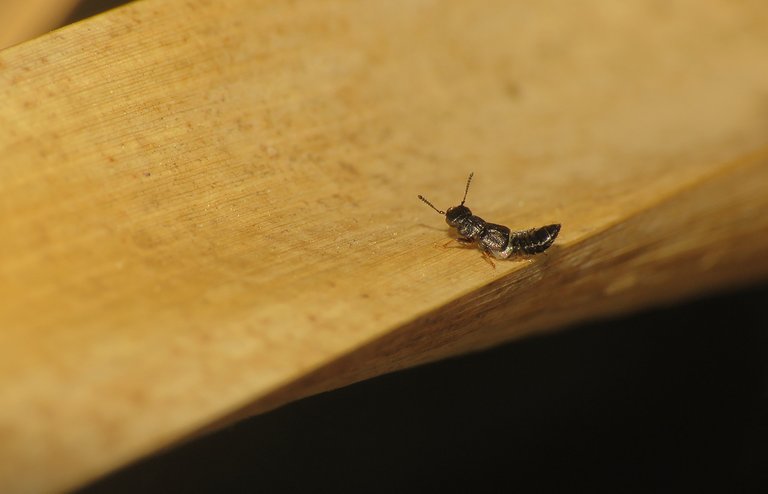
The lower leaves on some of these plants were brown and dry like the inflorescence with seeds.
On one of those dead leaves, I found another minuscule insect.
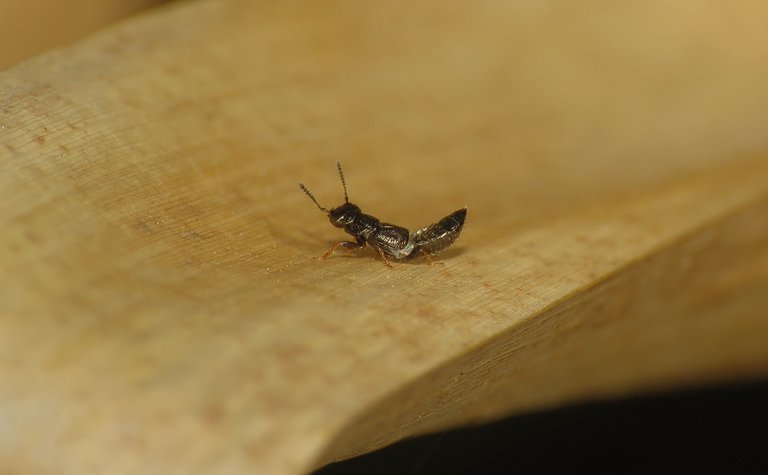
A rove beetle.
Just like in the case of the midge introduced earlier in the post, I can't tell you the name of the species because many similar-looking ones are present in the area.
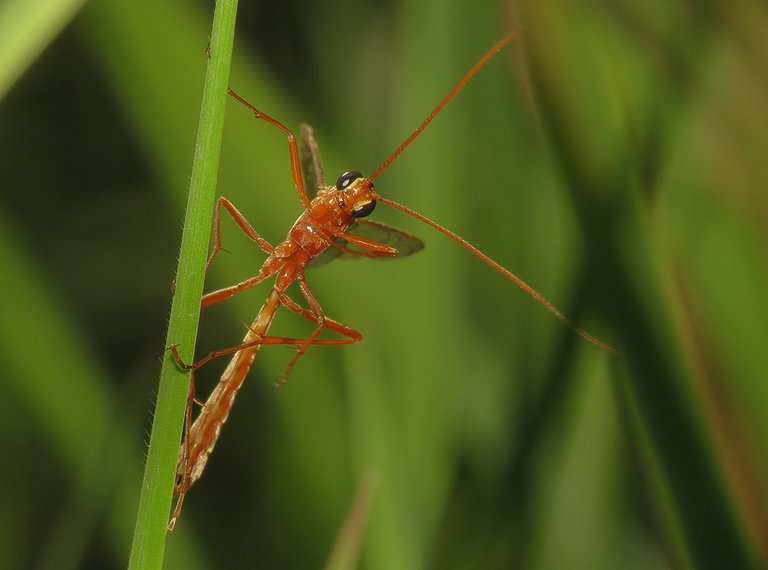
This interesting wasp, much bigger than other insects shown so far in this post, was photographed in the grass, five or six meters from the pond. This is a species from the genus Ophion from the Ichneumonidae family. Maybe Ophion parvulus, but it's hard to say. Again, because of quite a few almost identical-looking species present practically everywhere in Europe.
We took one last look at the pond and drove away.
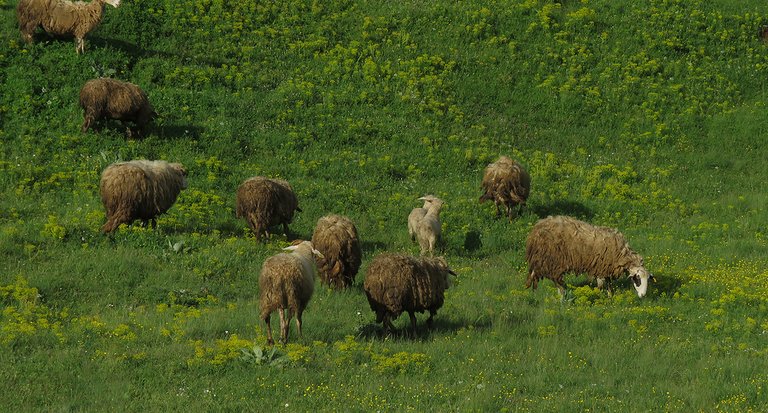
Ten or so kilometers further ...
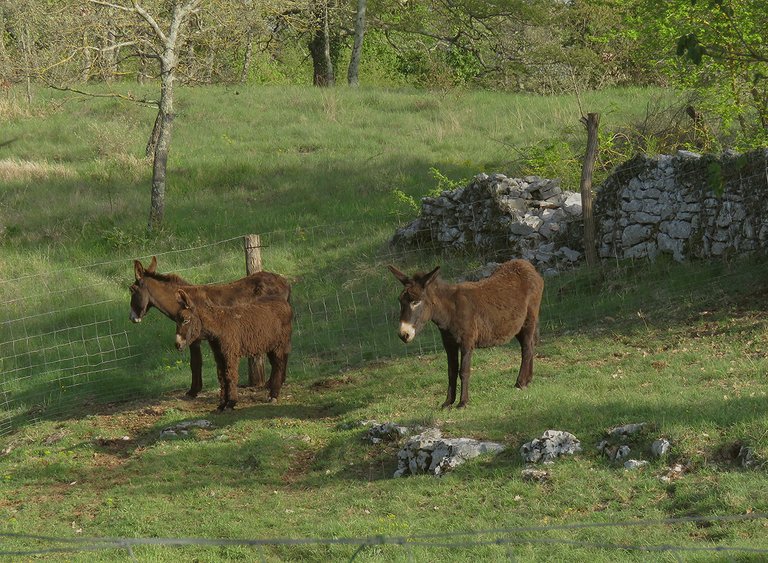
... while exploring the narrow country lane that we never visited before ...
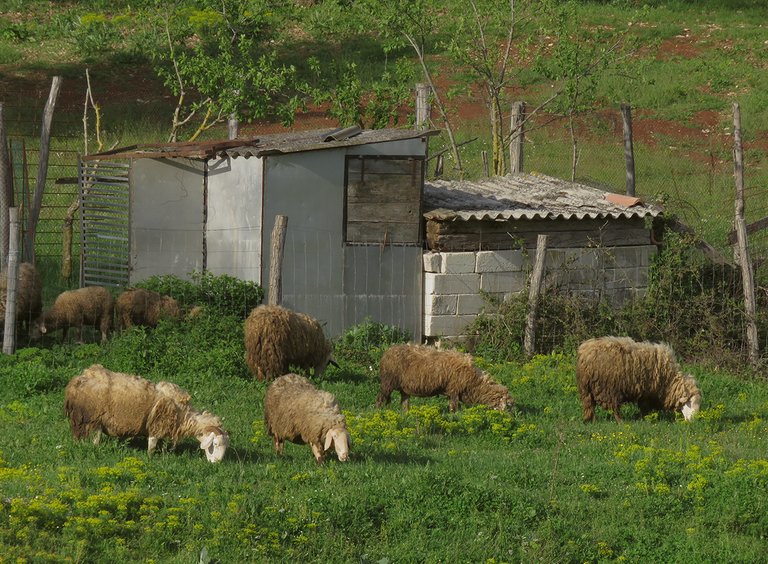
... someone noticed a small farm in the valley not far from the road ...
... so we stopped again ...
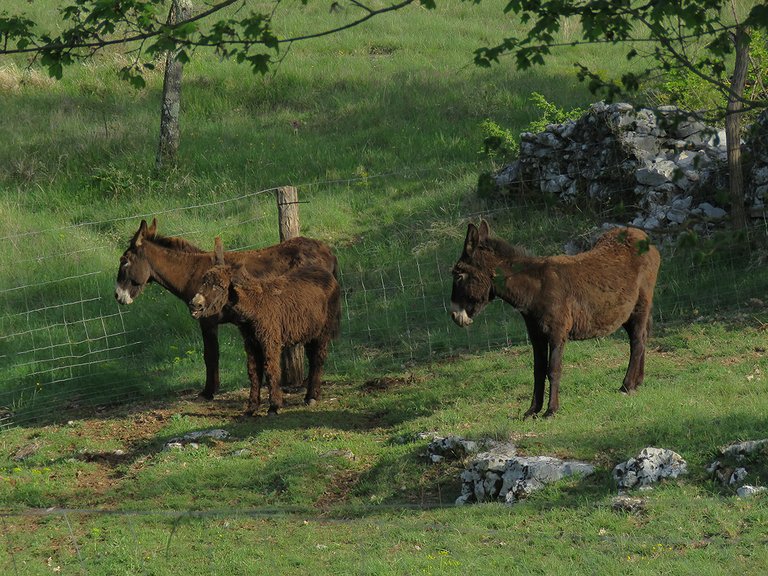
... and walked to the fence, where we could take a better look at the animals.

There was a small flock of sheep ...
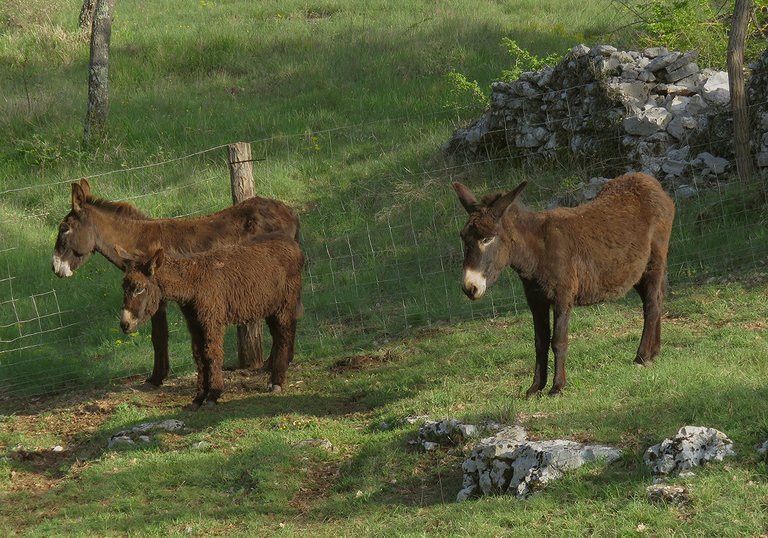
... and three donkeys that looked like a typical family.
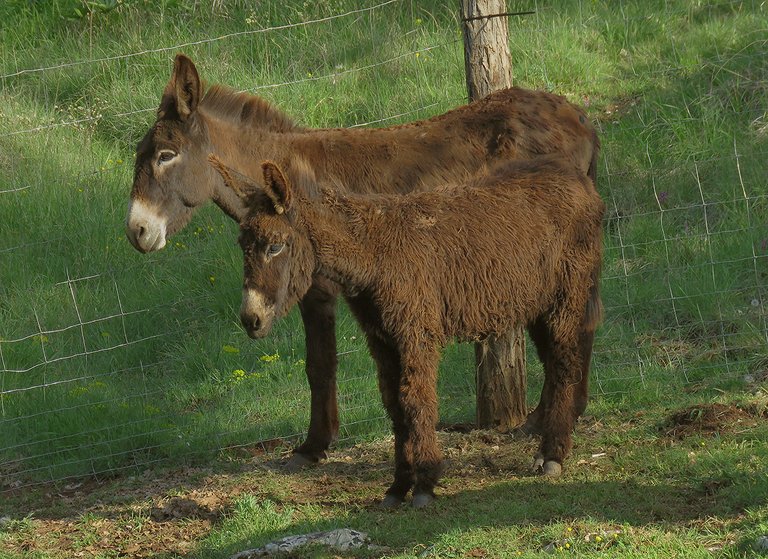
One of them was a teenager. I guess.
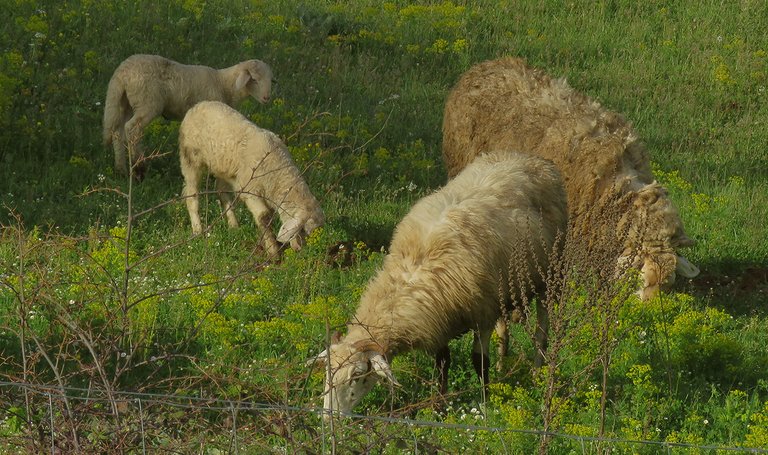
I saw some young ones among the sheep as well.
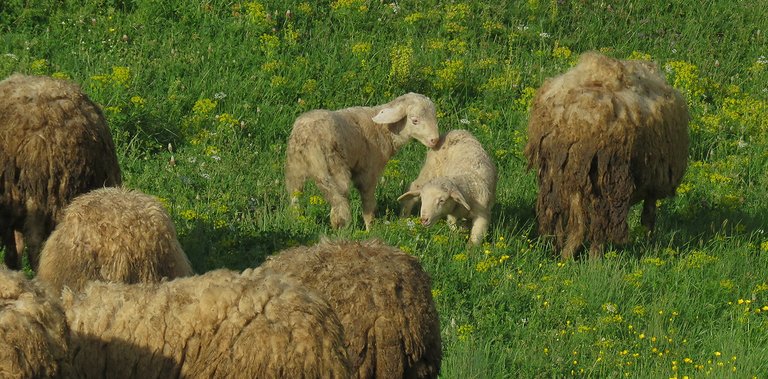
They were sniffing, exploring, jumping, and playing around.
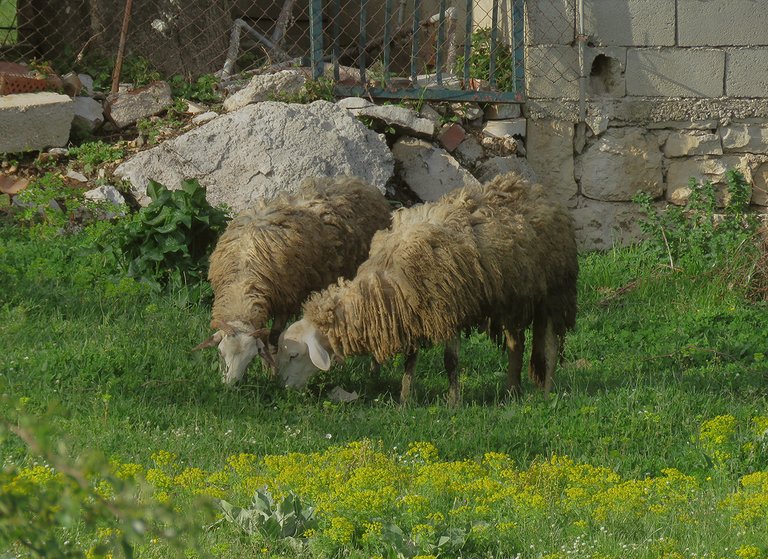
We spent almost an hour there ...
... near the fence. Above the valley.
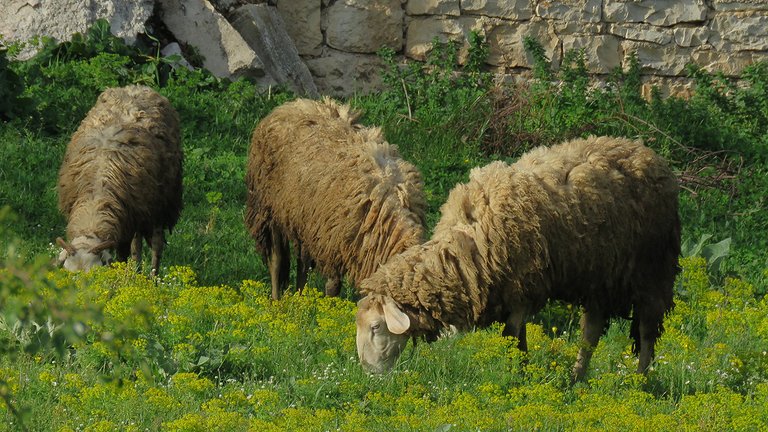
I climbed on the garden wall of the neighboring house ...
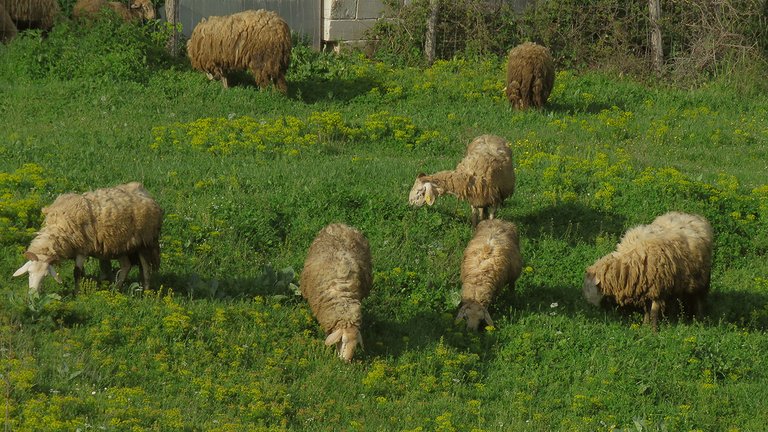
... because only from that elevated position, I was able to leave the fence out of the picture.
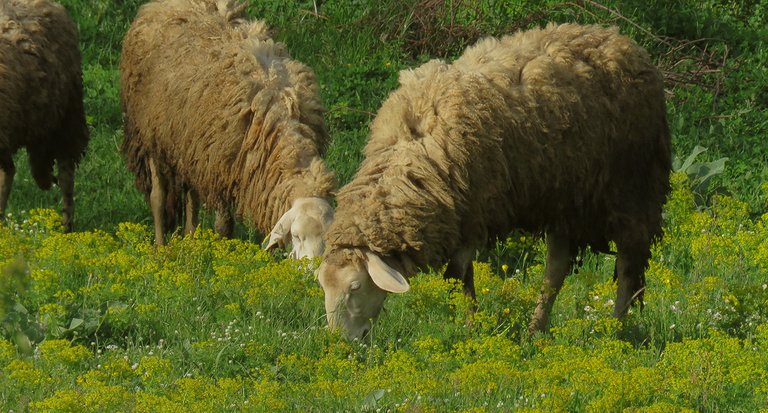
After taking this shot, we were on the road again.
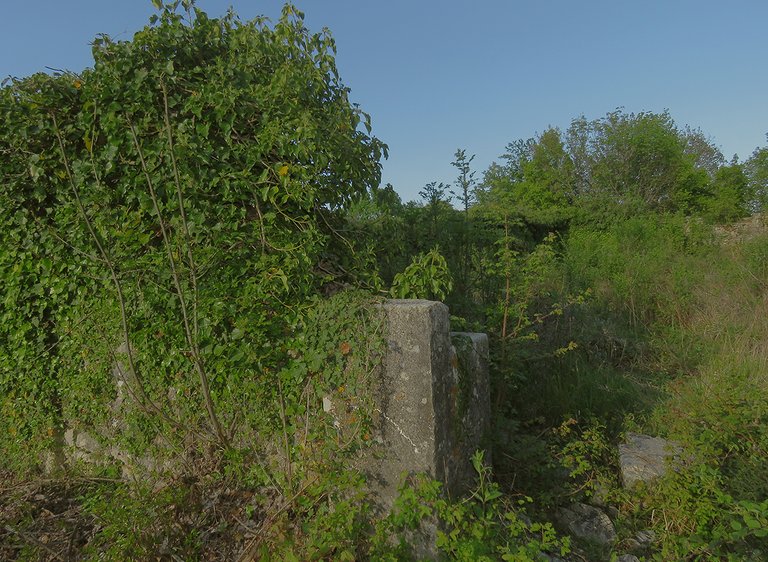
The next stop was a couple of kilometers from the town called Kanfanar. About forty kilometers from home.
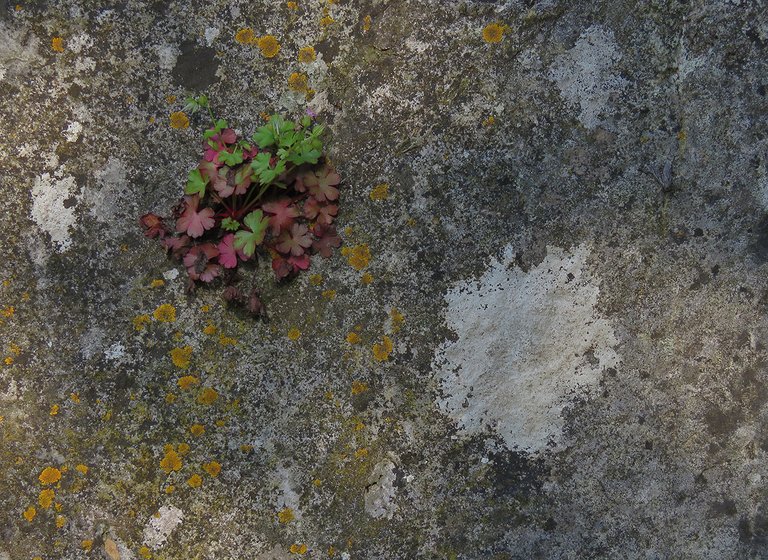
It was a short break from driving. I photographed only this detail on the wall of some ancient ruin, a shot in which you can see the Geranium lucidum plant, and some lichens ...
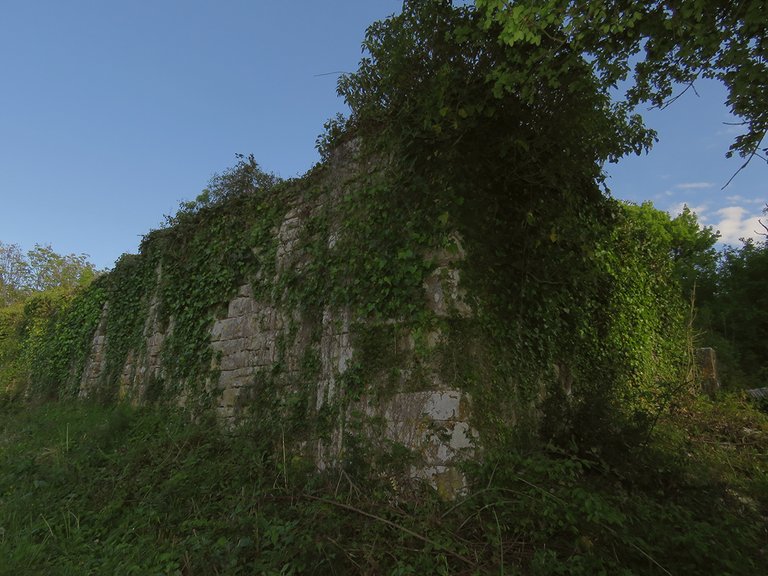
... and this other photograph, with the wider view of the stone wall covered with dense vegetation.
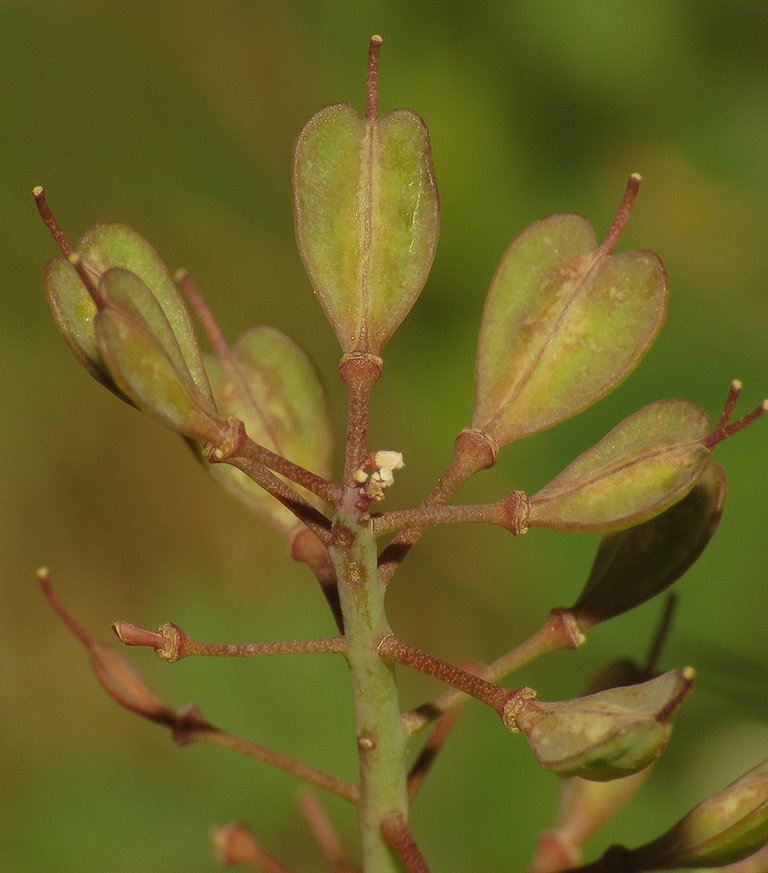
After some more driving, an hour or so, through the labyrinth of country lanes that connect farms and small villages in this inland area ...
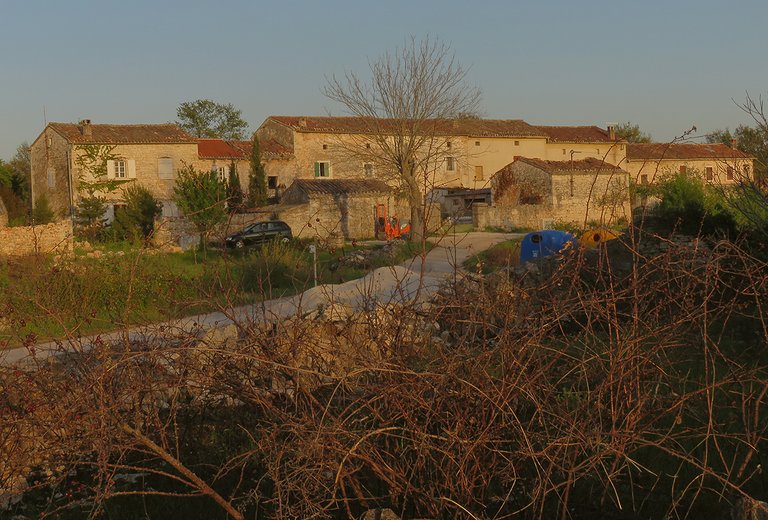
... we stopped near the village called Rezhantzi. At this point, we were about thirty kilometers from home. And the evening was almost there.
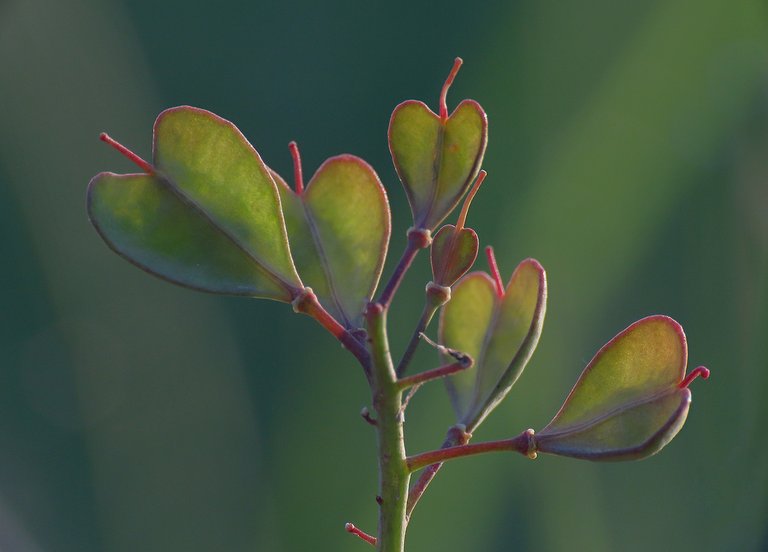
I photographed some interesting plants here.
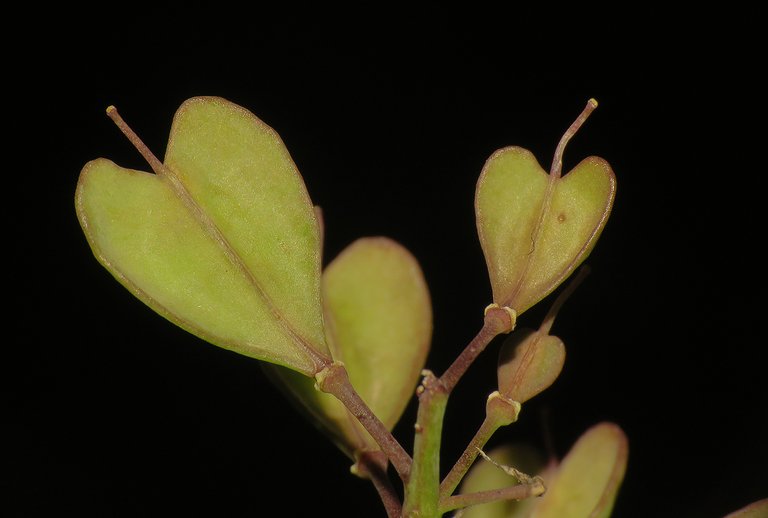
These are the heart-shaped fruits of the Capsella bursa-pastoris and in the following shot ...
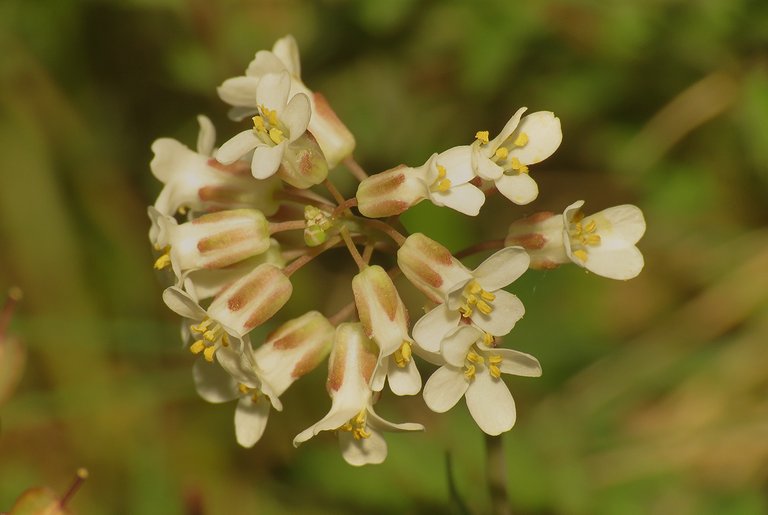
... you can see the small flowers of the same plant.
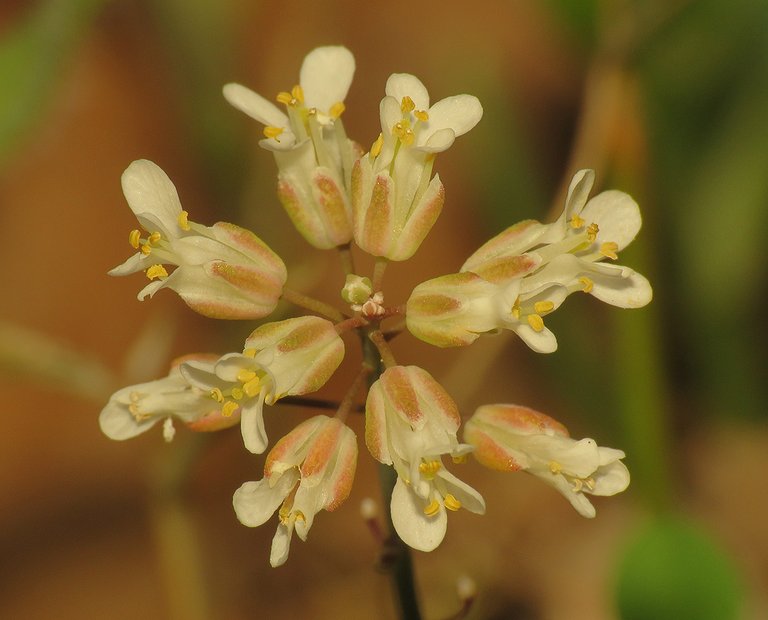
Here you can take another look at those flowers.
The wild strawberries were growing near the path that leads into the woods.
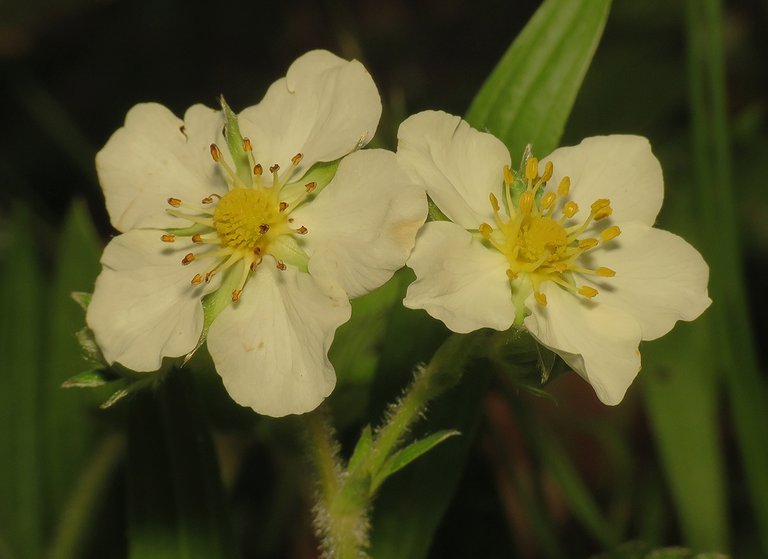
Here you can take a more up-close look at their flowers.

On the edge of the forest, I found the Euphydryas aurinia butterfly, a species that I never saw in the seaside areas around the place where I live.
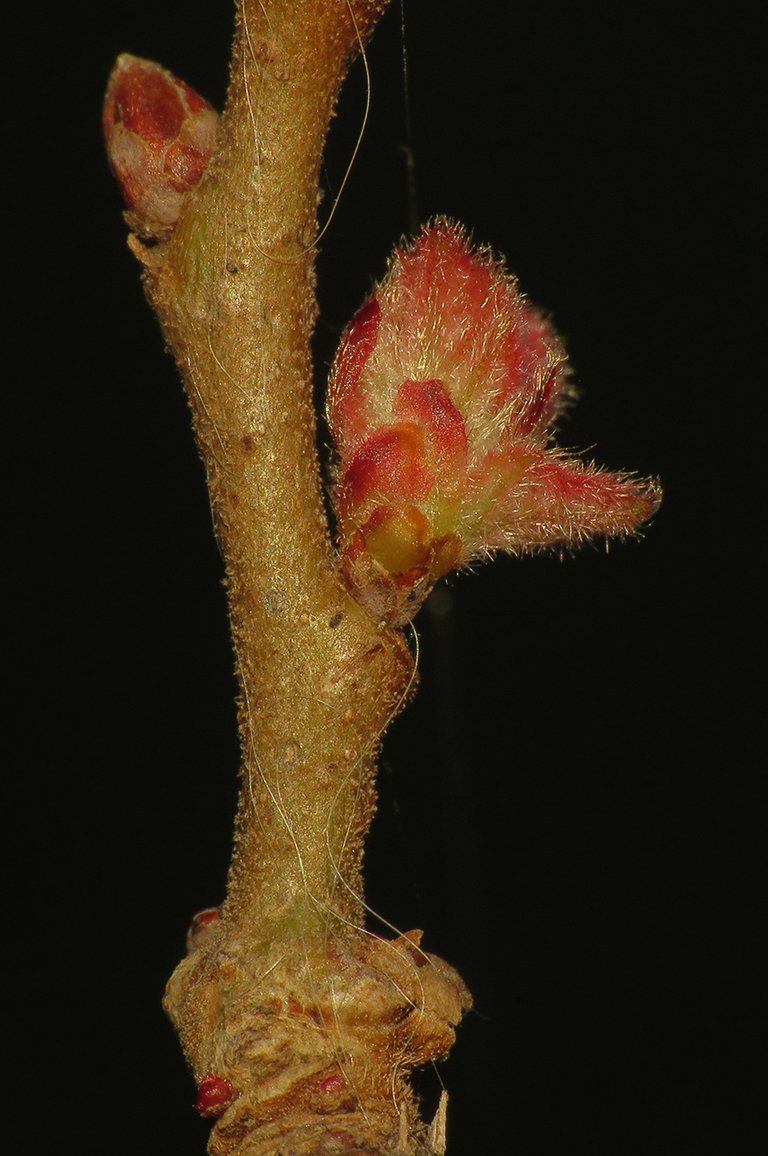
This detail was photographed under the first line of trees.
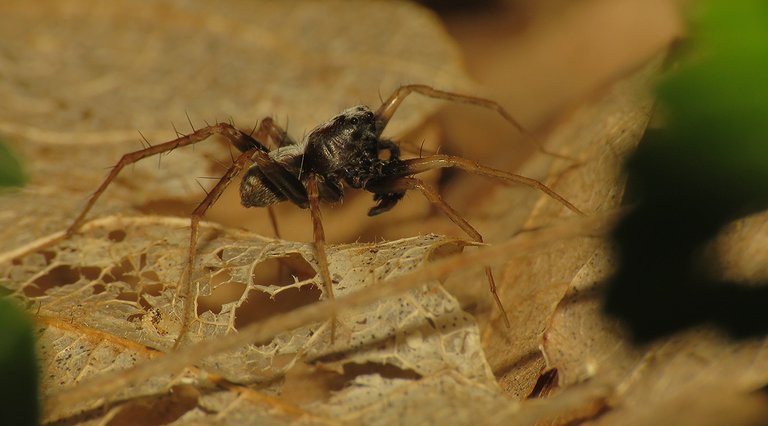
Here, the ground was covered with fallen leaves.
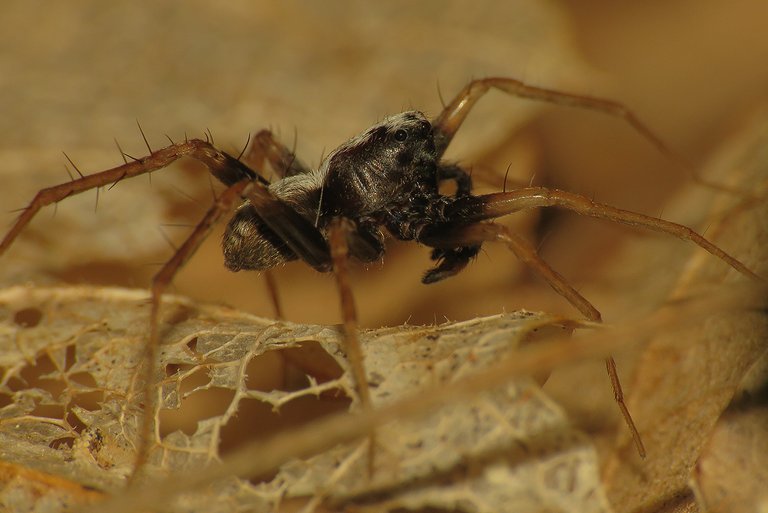
Very fast spiders were running around. I don't know the name of this species.
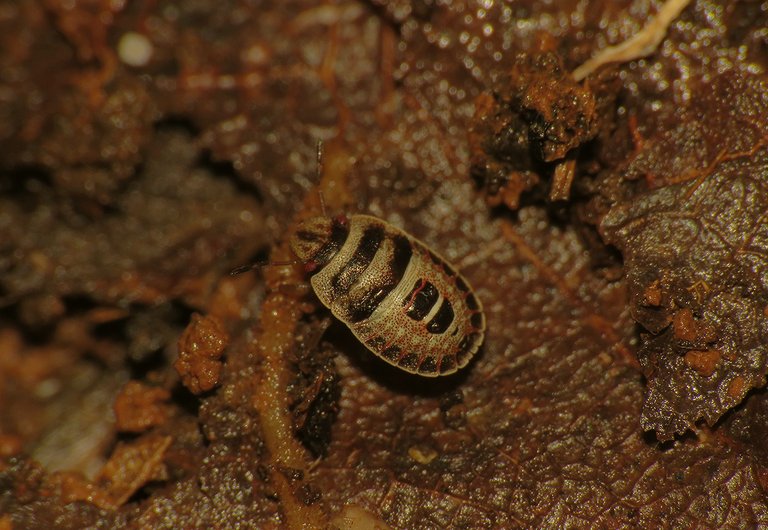
When I removed some of that dead foliage, I found a young, wingless nymph of some bug. Shield bug, probably.
On the way back to the car, I stopped to photograph the flower of the Vicia lutea plant ...
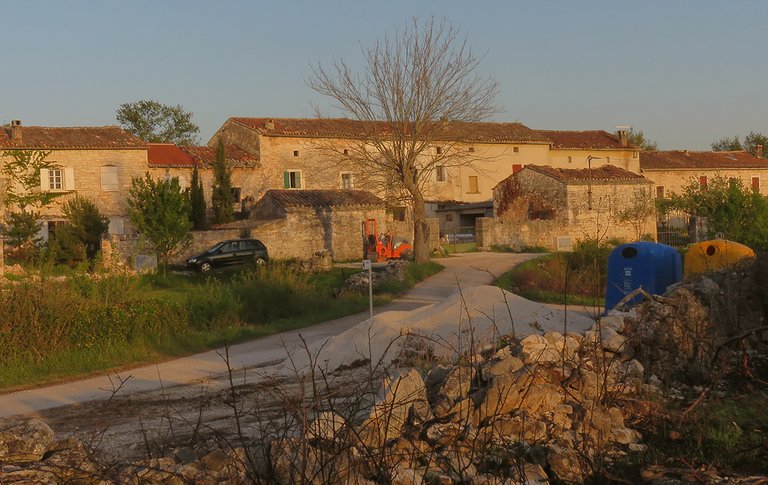
... I took a last look at the village, and then we all drove directly home.
AND THAT'S IT. THE TRIP ENDS HERE. I SHOWED YOU ALL THE PHOTOGRAPHS FROM THAT DAY, THE FIRST OF MAY. AS ALWAYS IN THESE POSTS ON HIVE, THE PHOTOGRAPHS ARE MY WORK - THE END.

